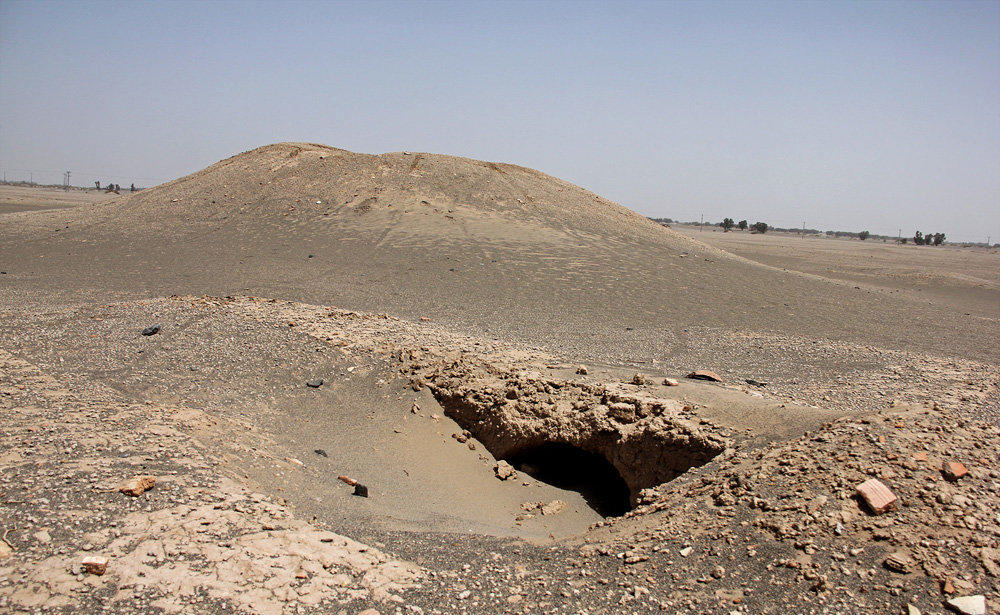Preliminary studies by cultural heritage experts show the area in Fahraj County, Kerman Province, uncovered by powerful sand storms is historical.
A dust and sand storm in late March revealed an area in Fahraj containing what Gholamreza Nejad Khaleqi, governor of Fahraj, claimed were ancient ruins and broken adobe and earthenware.
However, cultural heritage officials refused to confirm the claim, maintaining that in-depth studies must be carried out before labeling the region "historical", ISNA reported.
"One cannot claim that an area is historical as soon as several objects appear from under the ground after storms and floods, since they might have been carried from other regions by water or storm," Mohammad Vafaei, the head of the provincial office of Iran's Cultural Heritage, Handicrafts and Tourism Organization, had said earlier this week.
Experts from Kerman's ICHHTO office have now completed the preliminary studies and declared that the site could very well be a remnant of a historical town.
According to Hamid Rouhi, the deputy head of the provincial ICHHTO, the site is estimated to date back to the early Islamic Middle Ages (661-1508 AD).
"It is the first time that such ruins have emerged so there is no precise data on their age and history," he said, adding that more information will be released as excavations continue.
The ICHHTO office has requested the aid of the Research Institute of Cultural Heritage and Tourism, hoping that the area can be inscribed on the National Heritage List once sufficient information is gleaned from the studies to merit its inscription.
"Military forces and law enforcement as well as ICHHTO's protection unit are currently guarding the area and full security will be provided until the end of research practices," Rouhi said.
Fahraj and Rigan in Kerman are home to numerous ancient sites.
Nearly 200 to 300 hectares of historical area have been discovered in Rigan following the floods over the past months, for which an excavation permit has recently been issued. In Negin Kavir region also, four sites have emerged and must be studied.


